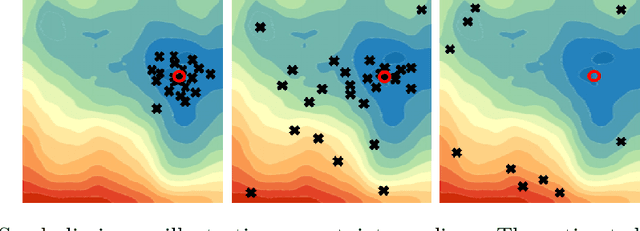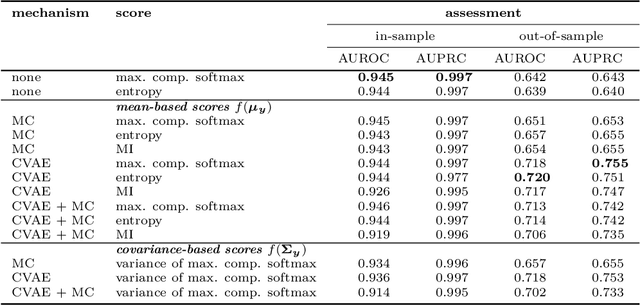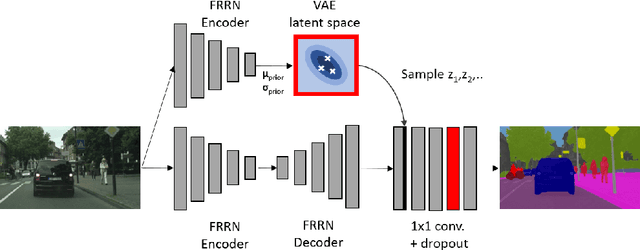Stefan Rüping
Inspect, Understand, Overcome: A Survey of Practical Methods for AI Safety
Apr 29, 2021Abstract:The use of deep neural networks (DNNs) in safety-critical applications like mobile health and autonomous driving is challenging due to numerous model-inherent shortcomings. These shortcomings are diverse and range from a lack of generalization over insufficient interpretability to problems with malicious inputs. Cyber-physical systems employing DNNs are therefore likely to suffer from safety concerns. In recent years, a zoo of state-of-the-art techniques aiming to address these safety concerns has emerged. This work provides a structured and broad overview of them. We first identify categories of insufficiencies to then describe research activities aiming at their detection, quantification, or mitigation. Our paper addresses both machine learning experts and safety engineers: The former ones might profit from the broad range of machine learning topics covered and discussions on limitations of recent methods. The latter ones might gain insights into the specifics of modern ML methods. We moreover hope that our contribution fuels discussions on desiderata for ML systems and strategies on how to propel existing approaches accordingly.
Approaching Neural Network Uncertainty Realism
Jan 08, 2021



Abstract:Statistical models are inherently uncertain. Quantifying or at least upper-bounding their uncertainties is vital for safety-critical systems such as autonomous vehicles. While standard neural networks do not report this information, several approaches exist to integrate uncertainty estimates into them. Assessing the quality of these uncertainty estimates is not straightforward, as no direct ground truth labels are available. Instead, implicit statistical assessments are required. For regression, we propose to evaluate uncertainty realism -- a strict quality criterion -- with a Mahalanobis distance-based statistical test. An empirical evaluation reveals the need for uncertainty measures that are appropriate to upper-bound heavy-tailed empirical errors. Alongside, we transfer the variational U-Net classification architecture to standard supervised image-to-image tasks. We adopt it to the automotive domain and show that it significantly improves uncertainty realism compared to a plain encoder-decoder model.
Aligning Subjective Ratings in Clinical Decision Making
Sep 11, 2020
Abstract:In addition to objective indicators (e.g. laboratory values), clinical data often contain subjective evaluations by experts (e.g. disease severity assessments). While objective indicators are more transparent and robust, the subjective evaluation contains a wealth of expert knowledge and intuition. In this work, we demonstrate the potential of pairwise ranking methods to align the subjective evaluation with objective indicators, creating a new score that combines their advantages and facilitates diagnosis. In a case study on patients at risk for developing Psoriatic Arthritis, we illustrate that the resulting score (1) increases classification accuracy when detecting disease presence/absence, (2) is sparse and (3) provides a nuanced assessment of severity for subsequent analysis.
Making Efficient Use of a Domain Expert's Time in Relation Extraction
Jul 12, 2018



Abstract:Scarcity of labeled data is one of the most frequent problems faced in machine learning. This is particularly true in relation extraction in text mining, where large corpora of texts exists in many application domains, while labeling of text data requires an expert to invest much time to read the documents. Overall, state-of-the art models, like the convolutional neural network used in this paper, achieve great results when trained on large enough amounts of labeled data. However, from a practical point of view the question arises whether this is the most efficient approach when one takes the manual effort of the expert into account. In this paper, we report on an alternative approach where we first construct a relation extraction model using distant supervision, and only later make use of a domain expert to refine the results. Distant supervision provides a mean of labeling data given known relations in a knowledge base, but it suffers from noisy labeling. We introduce an active learning based extension, that allows our neural network to incorporate expert feedback and report on first results on a complex data set.
 Add to Chrome
Add to Chrome Add to Firefox
Add to Firefox Add to Edge
Add to Edge